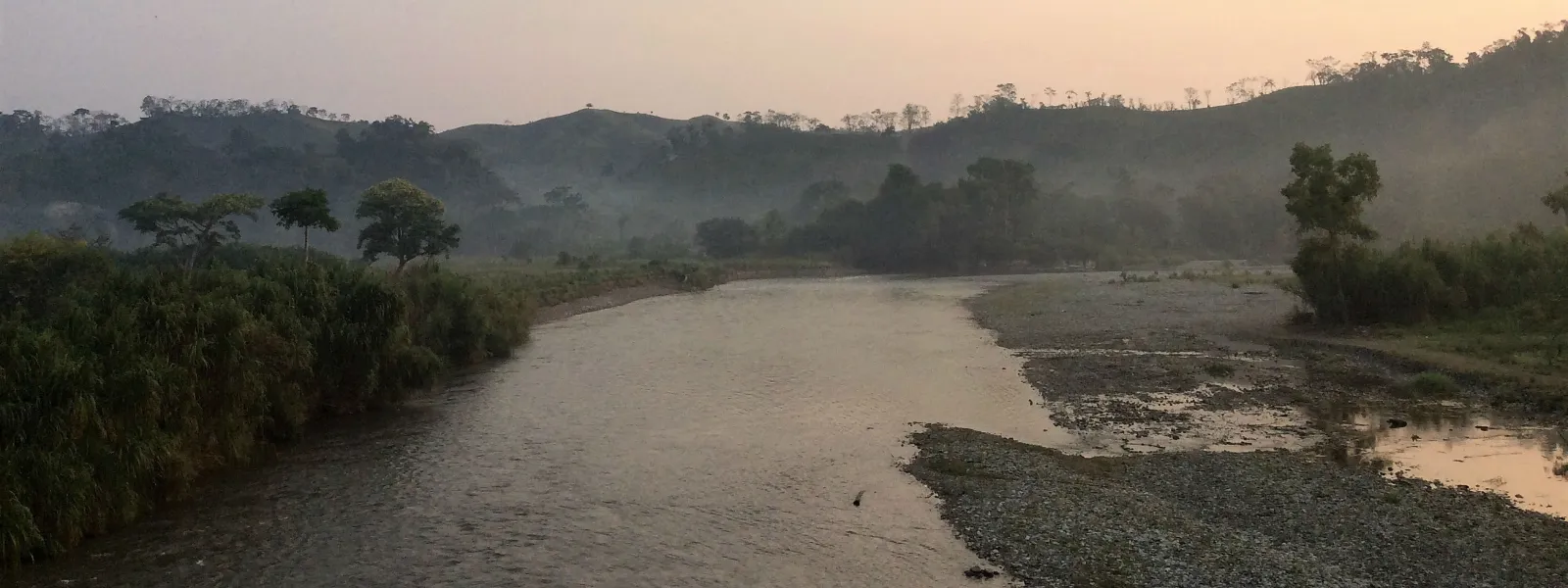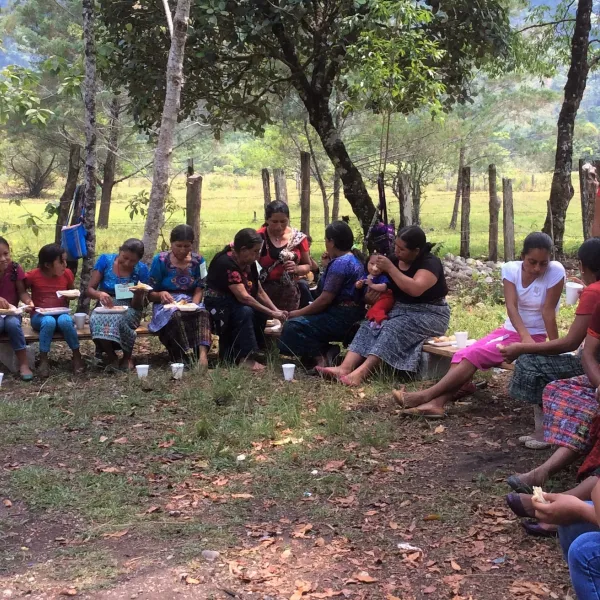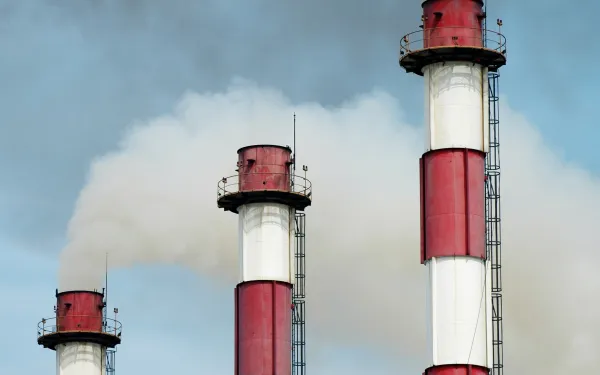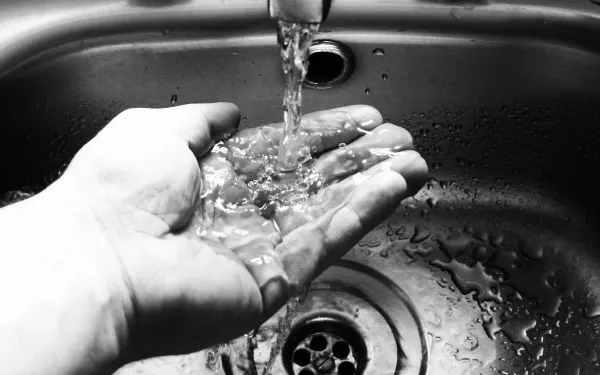
Project
Liliana Ávila /AIDAMayan women’s struggle before the Inter-American Development Bank in Guatemala
Mayan communities succeeded in getting the IDB Invest to develop a responsible exit plan after withdrawing its financing for two hydroelectric projects that negatively impacted ecosystems and the livelihoods of indigenous peoples, especially women, in the micro-region of Yichk'isis (Ixquisis).
In the struggle to defend their water, territory and way of life, indigenous Mayan communities in the Yichk'isis (Ixquisis) micro-region of northern Guatemala convinced the Inter-American Development Bank Group to withdraw its financing of two hydroelectric dams whose implementation violated their rights. The decision was also significant in that the IDB, for the first time, designed a responsible exit plan.
That historic advance was the result of the complaint that the communities filed in August 2018—with the support of AIDA, the Plurinational Ancestral Government of the Akateko, Chuj, and Q'anjob'al Native Nations, and the International Platform against Impunity. The complaint was filed with the Independent Consultation and Investigation Mechanism (MICI), the IDB Group's accountability office.
In resolving the case in September 2021, the MICI concluded that IDB Invest failed to comply with its own operational policies and safeguards, in the framework of the financing granted to the company Energía y Renovación S.A. for the implementation of the San Mateo and San Andrés hydroelectric projects.
Learn more about this achievement
In the mountains of Northwestern Guatemala, near the border with Mexico, the land is rich and fertile. Several important rivers and many other water sources feed the soil.
The residents of these mountains, many indigenous women of Mayan descent, have long depended on the waters to nourish them, to provide them with fish, as well as for agriculture, sanitation, and cooking.
But the construction of the San Mateo and San Andres dams has caused water scarcity and the contamination of rivers and other natural resources long cherished by the communities.
The near lack of water has also drastically reduced harvests, lessening the income gained from selling corn, wheat, beans, coffee, sugar cane and other products in the market. As a result, the conditions of poverty in the area have deepened.
And the risk situation is profound, particularly for women, who have played a very important role in the defense of water and territory threatened by hydroelectric projects, and are therefore victims of intimidation and stigmatization.
As guardians of their land and water, they have come to its defense and they’ll continue to prevent environmental deterioration from further harming their families.
Read our fact sheet on the case

Related projects

Tools for sustainable fisheries and coastal management
Our oceans are collapsing in every sense of the word. In the last hundred years, we have overfished and polluted most every treasured and productive marine and coastal ecosystem in reach. Climate change is now causing its own grave set of marine problems. Yet there is hope: success stories that suggest we can turn things around if we act now. AIDA is committed to making sustainable fisheries a reality and to helping restore and protect coastal waters throughout the Americas. To achieve this, we must help governments strengthen and enforce laws and regulations protecting marine and coastal biodiversity. AIDA’s new publication, “Tools for Sustainable Fisheries and Coastal Management” provides a road-map to tackle this challenging work. This Spanish-language guide explains the many problems plaguing our seas and provides specific legal, scientific and economic tools to more sustainably manage our marine and coastal resources. Government officials and legislators can use this information to develop, improve, and more effectively enforce national marine biodiversity laws and regulations. Read the Executive Summary (in Spanish) Chapter 1. The Oceans and Our Fisheries: the Need for Sustainable Marine Management Chapter 1 analyzes the current condition of the oceans, discussing those factors responsible for the decline in fisheries. Among those most responsible for the decline are overfishing, lack of regulation, and an abuse of technology. The chapter continues with a review of international legal instruments in force that establish obligations for governments to protect and conserve the seas and their biodiversity. The review concludes that current controls and preventative measures have not been sufficient to reduce harmful impacts on marine resources. Some fish populations are deteriorating so rapidly that new collapses in commercial fisheries may occur in several regions of the world. For this reason, it is up to decision-makers, consumers and the fishing industry to implement more effective control measures (presented in the following chapters) to prevent the same grave situations, provided as examples here. Chapter 2. Planning for Sustainable Fisheries This chapter addresses the issue of fishing regulations, which in most countries comprise an important tool to control the activity but are not the only answer to declining fish stocks. Once the term of fisheries management is defined, the discussion shifts to measures for fishing management and classification, from techniques to controls on inputs or efforts and products or catches. The chapter explores management plans that make use of only one of these measures. It also touches on the content of these plans and their design procedures and some of their outstanding aspects. Also mentioned in the chapter is the need to have regularly updated records of granted fishing permits as a requisite for sustainable management. It concludes that the plight of fish stocks should compel countries to properly organize fishing activities to ensure the recovery and availability of fish for future generations. Chapter 3. Limiting the Overall Fishing Effort Chapter 3 describes and analyzes the current regulatory instruments used to limit the overall fishing effort, including programs to reduce fishing boat licenses, decommission boats, retrain fishermen, and reduce the time nets are cast. The chapter also suggests measures that should be considered in order for these programs to truly accomplish their objectives. Additionally, the chapter provides examples of specific programs to limit the overall fishing effort that were designed and implemented in various countries and can serve as models for parties interested in designing similar programs. Chapter 4. Controlling Catch Levels This chapter looks at the measures implemented to exercise control over fish catches. Among them are the so-called traditional methods such as fishing permits and fees, setting quotas on catches, establishing fishing seasons for certain species (closed seasons) and the minimum size of the specimens of commercial species as well as those under special protection or management. These tools have been applied in various countries to control catches, and the chapter includes examples of where this has happened to provide examples of the many options available. Also described in this chapter are "alternative" methods that countries can implement to control catches and ensure sustainable fishing activities. Of these options, some deserve particular attention. One involves controlling incidental catch, or bycatch, given its importance for conserving marine species. Another involves setting individual fishing quotas (IFQs), the most modern method to control catches. Chapter 5. Controlling Bycatch This chapter examines the phenomenon of bycatch, responsible for much of the deterioration of the world's marine biodiversity. Given that most modern fishing methods do not discriminate between targeted and untargeted species, many resources are lost when captured incidentally as bycatch, including fish, marine mammals and birds, among others. The chapter begins by describing the different types of fishing and the risk each poses to bycatch. Subsequently, the chapter looks at the different existing security measures, including examples of how different countries have faced the problem. It then explains that it is best to opt for a combination of measures that will result in the best possible scenario. Chapter 6. Marine Coastal Planning This chapter examines the tools for coastal planning and management as a method for effectively protecting coastal zones and seas. Coastal zones are particularly vulnerable to jurisdiction conflicts over the use and allocation of coastal marine resources due to the diversity of activities and ecosystems that exist in them. The chapter also looks at integrated coastal management (ICM) as a continuous and dynamic process between community, science and the state to implement integrated plans for the protection and development of coastal resources. Examples of ICMs are explored in Peru, Belize, Mexico, Colombia, Costa Rica and the European Union. The issue is complemented with ecosystem-based management and examples of the governance of spaces and marine resources in Antarctica and the high sea. The chapter concludes that to effectively and sustainably manage our seas we must integrate the basics of biophysical, social, economic and planning with a long-term vision. Chapter 7. Forms of Marine Protection This chapter explores marine protected areas (MPAs) and their benefits as a conservation tool. It also mentions the MPA categories in relation to protected ecosystems and the classifications of international organizations like UNESCO and the International Union for Conservation of Nature. It then lists the problems and solutions related to the delimitation of the size of the MPAs as well as those related to the actions of control, inspection and surveillance, and to the current and future financing of these areas. As case studies, the treatment of the MPAs in law and public policy are examined in Mexico, Costa Rica and Brazil. The chapter includes measures for the protection of offshore resources by transnational MPAs and ends by addressing the difference between no-fishing zones and fish stocks. Chapter 8. Monitoring, Control and Surveillance of Fishing Activities This chapter explores the monitoring, control and surveillance techniques in different countries. It shows how they are necessary to verify compliance with standards and determine the effectiveness in doing so. Monitoring is important to collect fishing information for making decisions. The chapter also addresses the issue of sanctions. It’s important to have the administrative and criminal legislation necessary to sanction and prevent behaviors that threaten the sustainability of fishing and marine biodiversity, the text reads. The chapter emphasizes the need for coordinating efforts between the different systems of government and/or countries to achieve greater compliance with standards. Chapter 9. Economic Tools and Incentives for Responsible Fishing In this chapter, the main economic tools for responsible fishing are analyzed, which when efficiently designed and applied can promote the protection, restoration, preservation and sustainable use of marine resources. As it is immersed in market dynamics, fishing is especially susceptible to the application of economic instruments and incentives. The chapter discusses three categories of economic instruments: market (fish certification and eco-labeling), fiscal (green taxes, duties and subsidies) and financial (creating funds and loans). For each category, the concept of the tool and its practical application are explained through examples. The last section of the chapter examines other economic incentives such as penalties and fines that seek to promote positive behaviors in the population. The chapter wraps up with a series of recommendations for the effective use of economic tools. These include studying the economic and social reality for setting positive environmental goals and for applying these instruments together with other policy and monitoring tools. Chapter 10. Aquaculture y Mariculture In Chapter 10, AIDA explains the impacts and health risks associated with aquaculture in the Americas and discusses less harmful, alternative approaches. The chapter includes examples of both successful and unsuccessful projects. We provide detailed information about the damaging impacts of aquaculture on the marine environment, wild species, local economies, and public health. We also discuss the basic requirements needed to reduce harmful impacts from aquaculture activities such as: adequate zoning of projects; regulation of cultivated species; appropriate feeding and waste-elimination techniques; and effective government monitoring and enforcement, among others. Additionally, we explain novel techniques such as polyculture, land cultivation, and ecological certification, which are being researched as possible alternatives with less human and environmental impacts. Chapter 11. Social and Economic Aspects of Responsible Fishing This chapter focuses on the socio-environmental aspects of the fishing industry, which is crucial for job creation, food security and the potential for overcoming poverty in a large portion of the world population. The chapter begins by analyzing the current state of the sector, and it raises warnings about the poverty and harsh labor conditions of those working in fishing. The chapter calls for changes in fishing policies to promote real change to the grim conditions in the industry. Different alternatives for action are discussed, and each is illustrated by real experiences from around the world to show their success or failure and the lessons that can be learned from them. Executive SummarY (SPANISH) Read the Full Report (in Spanish) Acknowledgements We thank everyone who in one form or another contibuted their knowledge and expertise to this publication. We especially thank: Rolando Castro, member of the AIDA Board of Directors; Sofía Cortina, Isabel Calle, Samantha Namnum, Gladys Martínez, Sandra Moguel, Florencia Ortúzar, María Giménez, Mónica Ribadeneira, John Kaltenstein and Phil Eager, Haydée Rodríguez, Víctor Quintanilla, Clarissa Castillo, Diego Alvarez, lawyers with expertise on the subject of marine conservation; and all interns who have helped us make this possible.
Read more
Controlling Short-Lived Climate Pollutants: An opportunity to better air quality and mitigate climate change
The report review the institutional, legislative, and regulatory frameworks, as well as existing government programs related to the control and monitoring of SLCPs, in three strategic countries of Latin America: Brazil, Chile and Mexico. Short-lived climate pollutants (SLCPs) are atmospheric agents that contribute to climate change and degrade air quality. They are so-named because of their relatively short lifespan in the atmosphere, ranging from a few days to a few decades. SLCPs include: black carbon, methane, tropospheric ozone, and hydrofluorocarbons. This report identifies areas of opportunity and potential gaps in which each of the three countries can make progress in mitigating these pollutants. Addressing these opportunities will benefit the fight against climate change, as well as the protection of ecosystems and human health. The report was made by the Interamerican Association for Environmental Defense (AIDA), in collaboration with the Instituto de Energia e Meio Ambiente (IEMA), and with the participation of the Centro de Derechos Humanos y Ambiente (CEDHA) of Argentina, and the Centro Mexicano de Derecho Ambiental (CEMDA), as well as the Red Latinoamericana de Contaminantes Climáticos de Corta Vida (RedRacc). Special thanks to Romina Picolotti of the Centro de Derechos Humanos y Ambiente (CEDHA); Laura Gallardo and Nicolás Huneeus of the Centro del Clima y Resiliencia de la Universidad de Chile; Gianni López of the Centro Mario Molina Chile; Gabriela Niño and Giselle García of the Centro Mexicano de Derecho Ambiental (CEMDA); Erika Rosenthal of Earthjustice; Sandra Guzmán of the Grupo de Financiamiento Climático para América Latina y el Caribe (GFLAC); Stela Herschmann of the Institute for Governance & Sustainable Development (IGSD); Evangelina Vormitagg of the Instituto Saúde e Sustentabilidade de Brasil; Marcelo Mena of the Ministerio de Medio Ambiente of Chile; Flavia Liberona and Javiera Valencia of the Fundación TERRAM of Chile; Luis Cifuentes of the Universidad Católica de Chile; Maria de Fatima Andrade and Paulo Hilário Nascimento Saldiva of the Universidad de São Paulo; and Sebastián Tolvett of the Universidad Técnico Metropolitana de Chile, for their comments and support. Read and download the report (in Spanish) Read and download the executive summart (available in English)
Read more
Water in Mexico: a human right, bottled
Mexico consumes 12 percent of the global volume of bottled water, highlighting the failures of the country’s water supply system and the violation of a basic human right. Nobody should be denied a glass of water. Serving your guests water is polite; it shows you have good manners and empathy for others. It is also, though not quite as obvious, an issue of human rights. In Mexico’s capital, until only recently, restaurants could deny a glass of water to their customers and require them to drink only bottled water. On one occasion, the owner of a gourmet pizzeria reacted furiously when she saw my boyfriend take out his own water bottle to take a pill. She told him it was prohibited to bring outside food and drink into her restaurant. Then, when we asked for a glass of water, she responded angrily: “We don’t give water away here, we sell it in bottles.” A circular business What you find being sold in supermarkets is not the water, but the bottle. In Mexico, the cost of the extraction and supply of water is relatively low, since almost the entire service is subsidized. According to the highest available rate, a glass of water costs seven cents (.007 Mexican pesos). For a bottle with the same quantity of water, the pizzeria charged $1.50 (28 pesos), seven times the supermarket price. The incident in the pizzeria occurred after the Legislative Assembly of Mexico City required food establishments to provide free glasses of water to customers who ask for it. But even after the legislative provision, I have often had to clarify that I want a glass of water, not a bottle. The waiters often warn me, “It’s filtered water,” reminding me of its unreliability. The dynamic behind this type of business has changed: they now buy large jugs of bottled water or spend money on filters, because in Mexico it’s well known that you never drink water directly from the tap. It’s an unspoken secret, almost popular belief, that tap water is dirty water. It’s common that even those of us who don’t buy bottled water have a filter in our homes. This belief emerged from the 1985 earthquake, when various pipes broke and drinking water mixed with sewage. Later, during a cholera epidemic in the 1990’s, the government promoted chlorinating or boiling the tap water. Yet no authority was responsible for the quality of the pipes through which the drinking water ran; water which, by definition, should be fit for human consumption. In contrast, Chile promotes three reliable water sources: chlorinated, boiled or taken from the tap. In Mexico, the health threat coincided with the arrival of bottled water. What the companies promoted in those early years was confidence and security in the quality of their water. So, little by little, we went from boiling and chlorinating our water, to buying it in 20-liter jugs, to buying small plastic bottles that hold less than 250 ml of water. According to the International Bottled Water Association (IBWA), in 2014 Mexicans consumed 253 liters of bottled water per person. This compares to 94.3 liters per person in Europe (where public drinking fountains are commonplace) and 37 liters per person globally. Mexico consumes 12 percent of the world’s total volume of bottled water. The World Bank cites 80 percent of the Mexican population as distrustful of the water supply system. Bottled water companies, then, have nothing but room to grow, especially considering the majority of the population doesn’t yet consume the recommended two liters of water per day. And a large quantity of bottled water is used on daily tasks such as cooking and washing dishes, even on bathing newborn babies. Can you or can’t you drink tap water? The answer is: It depends. The responsibility for water supply in Mexico is so fractioned that it’s impossible to get a convincing response. In the capital city, water quality is disclosed each year and in only two neighborhoods does it not meet standards for human consumption. Unfortunately, those with the worst water quality also have the lowest standard of living. Information on the subject doesn’t arrive to our homes, it’s difficult to access and – in some cases – the information is non-existent, hidden or disguised. No government authority is responsible for water quality: not the National Water Commission, not state or city governments. Violating a human right Without convincing responses about the reliability of the water supply system, Mexicans are opting to buy bottled water. By doing so, we’re demonstrating that something is wrong with the country’s water system, and the human right to water is not guaranteed. According to the UN, drinking water must be safe, clean accessible and affordable for all. The human right to water was included in the Mexican Constitution four years ago, but its implementation, and the party responsible for guaranteeing it, remains under discussion. While the debate continues, millions of Mexicans are, understandably, buying bottled water to protect their health. The lack of information about or accountability for the water supply system makes the guarantee of this human right nothing more than a dream. The UN established that people shouldn’t spend more than three percent of their income on water services. In Mexico, only those with incomes greater than $1,200 a month (21,000 pesos) spend three percent or less of their income on bottled water. The other 80 percent of households in the country spend as much as eight percent, a staggering figure, especially considering it doesn’t include what they pay for water used for other domestic activities. People are buying bottled water because they don’t trust the country’s water supply system. By denying a glass of water to its population, the Mexican government is denying a fundamental human right.
Read more